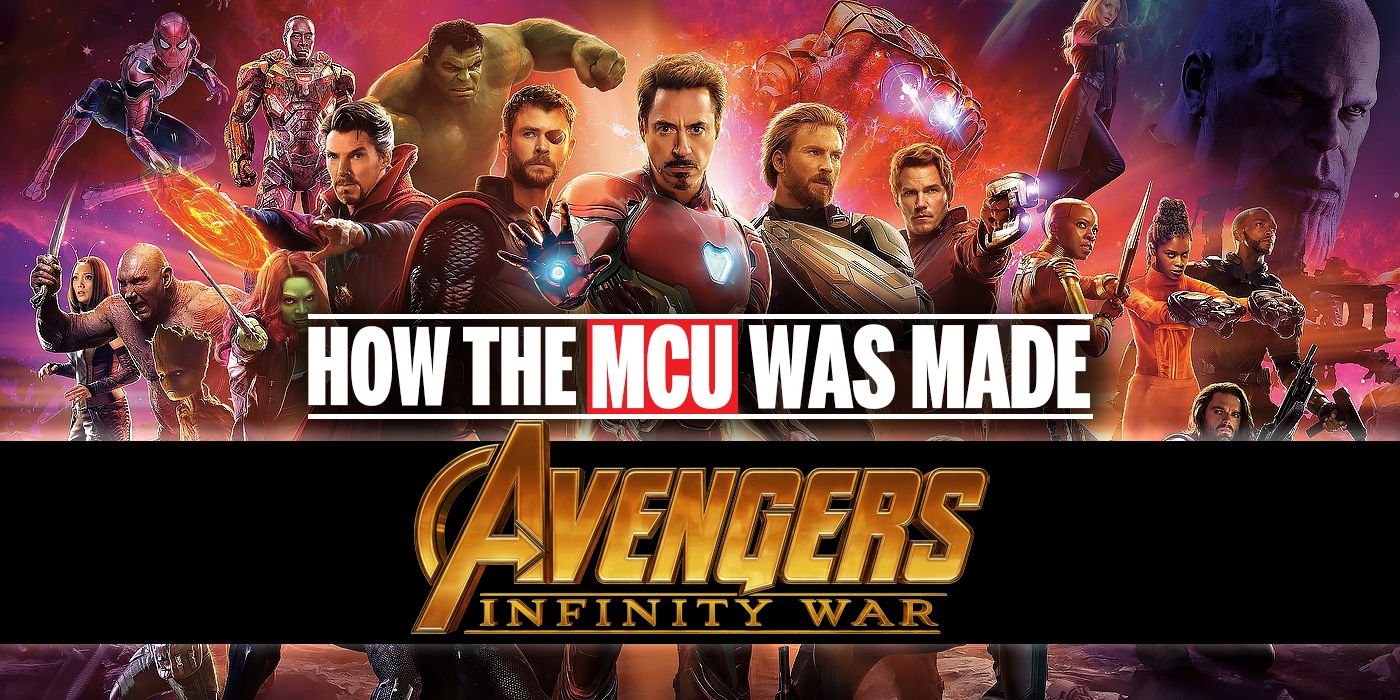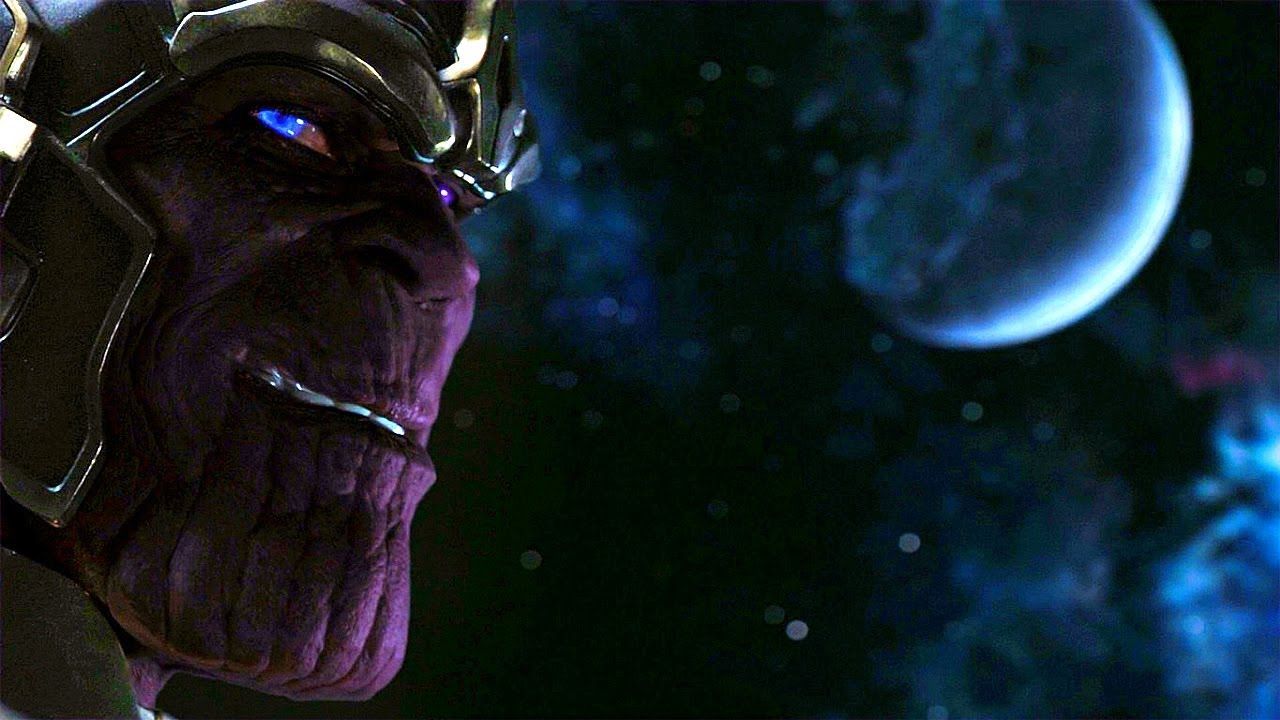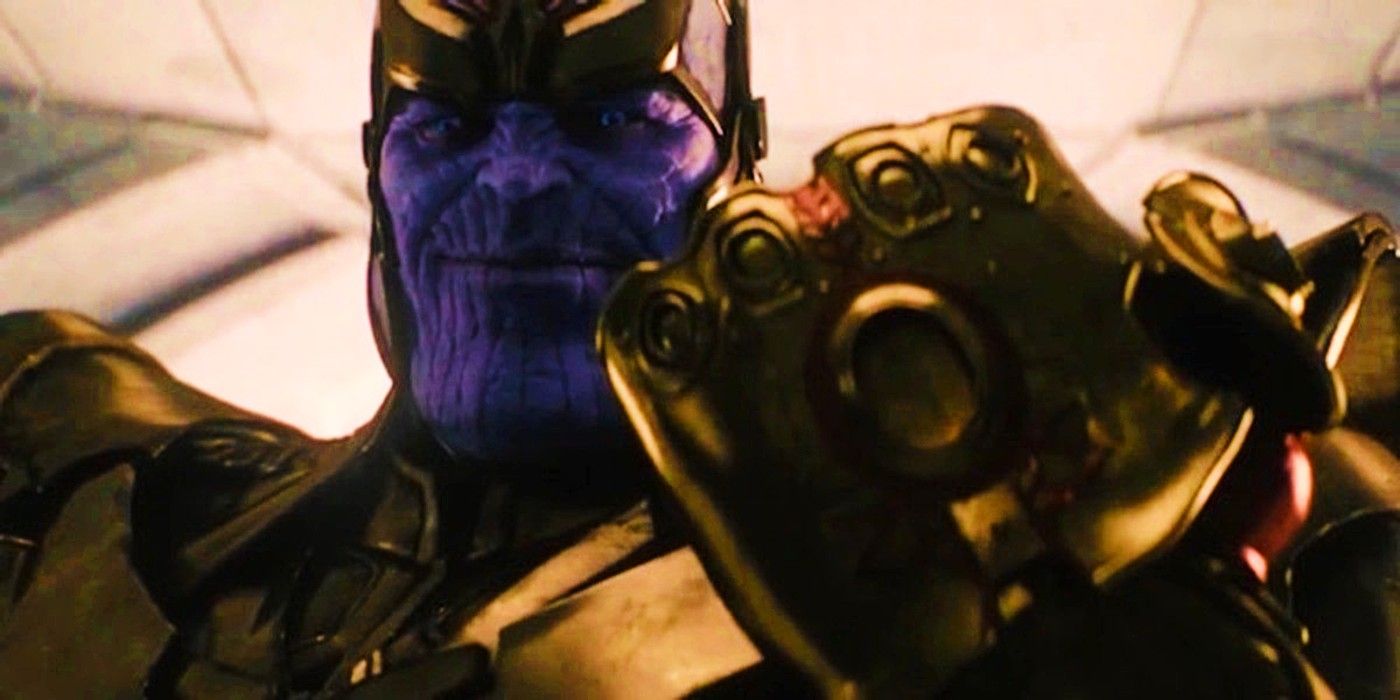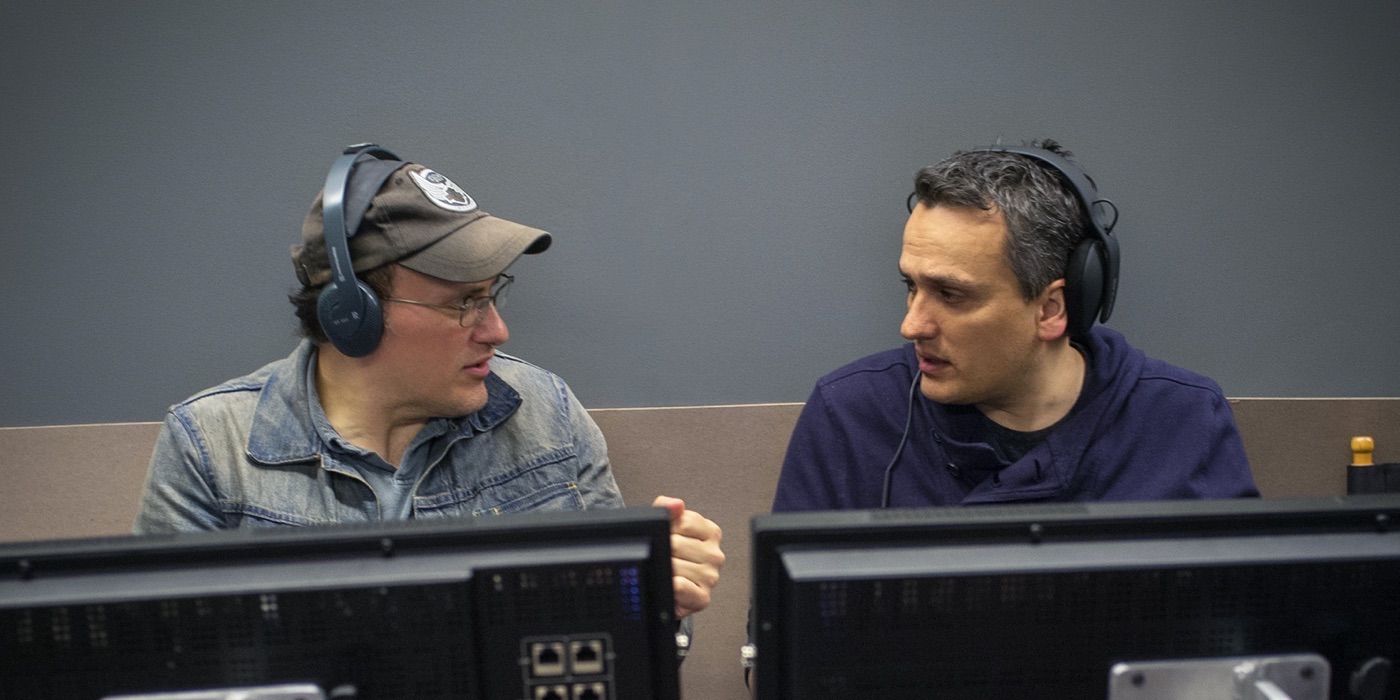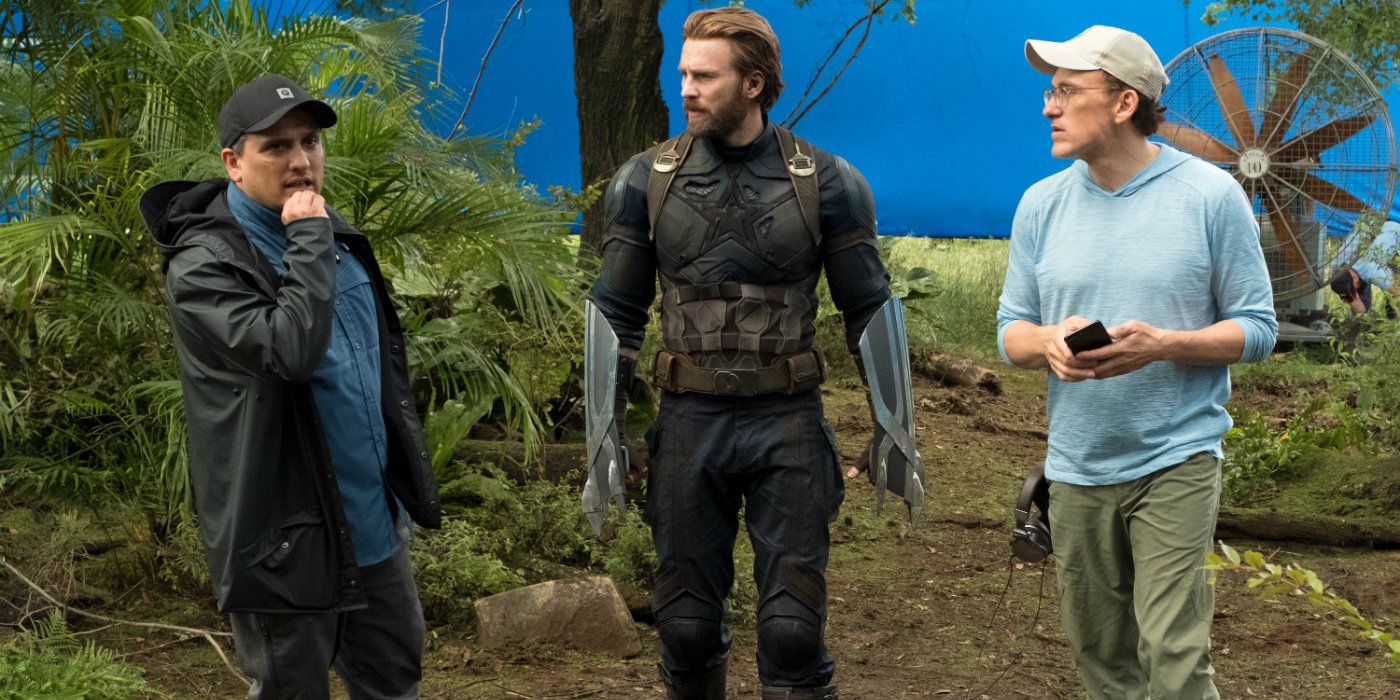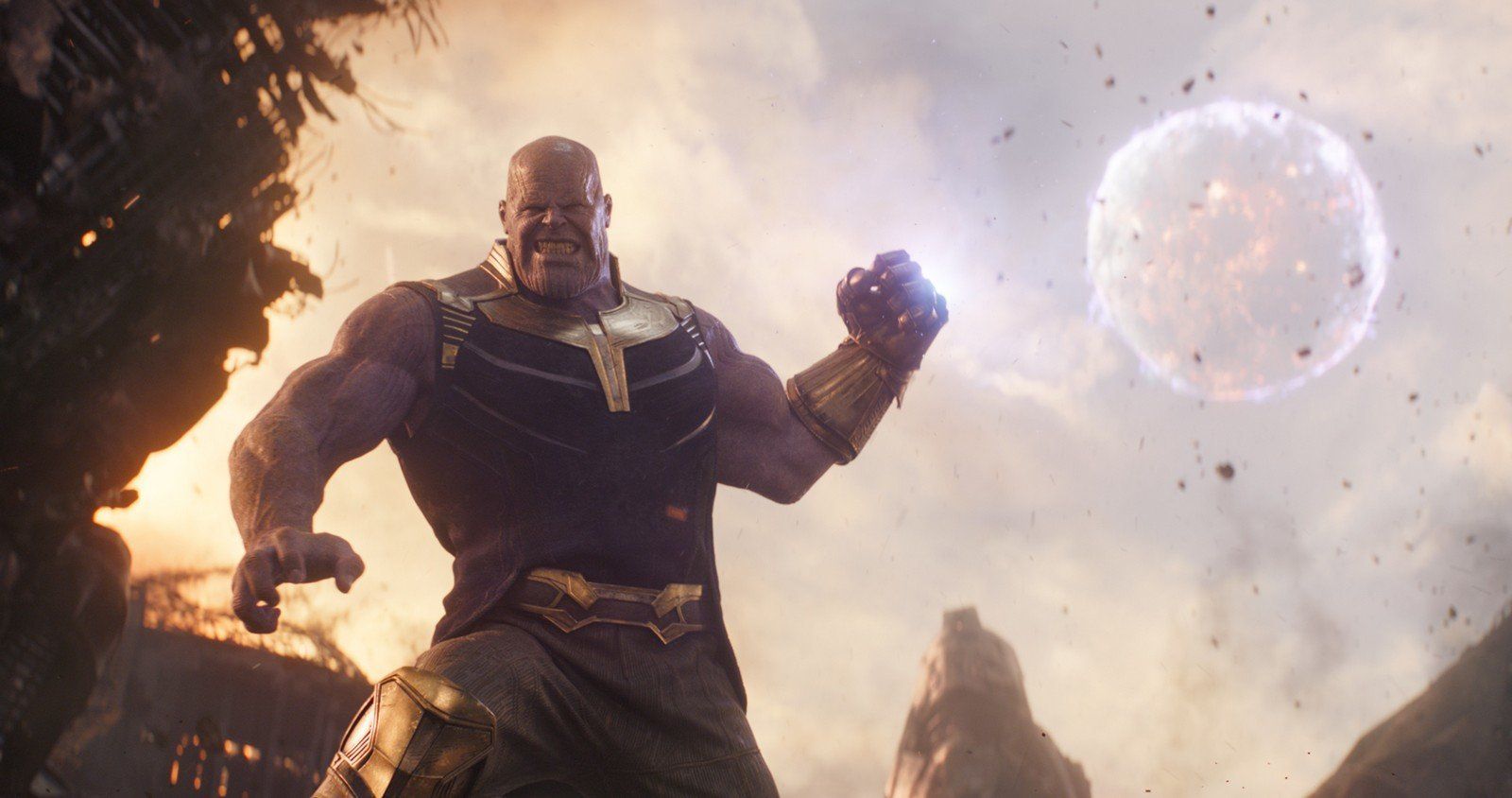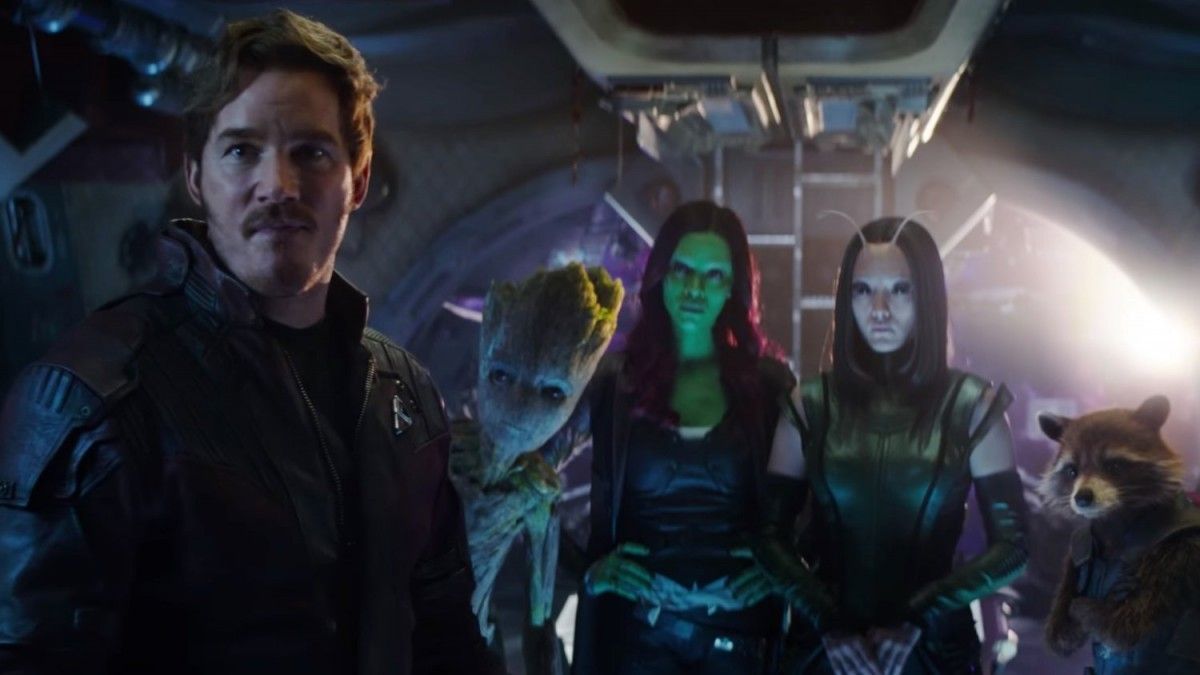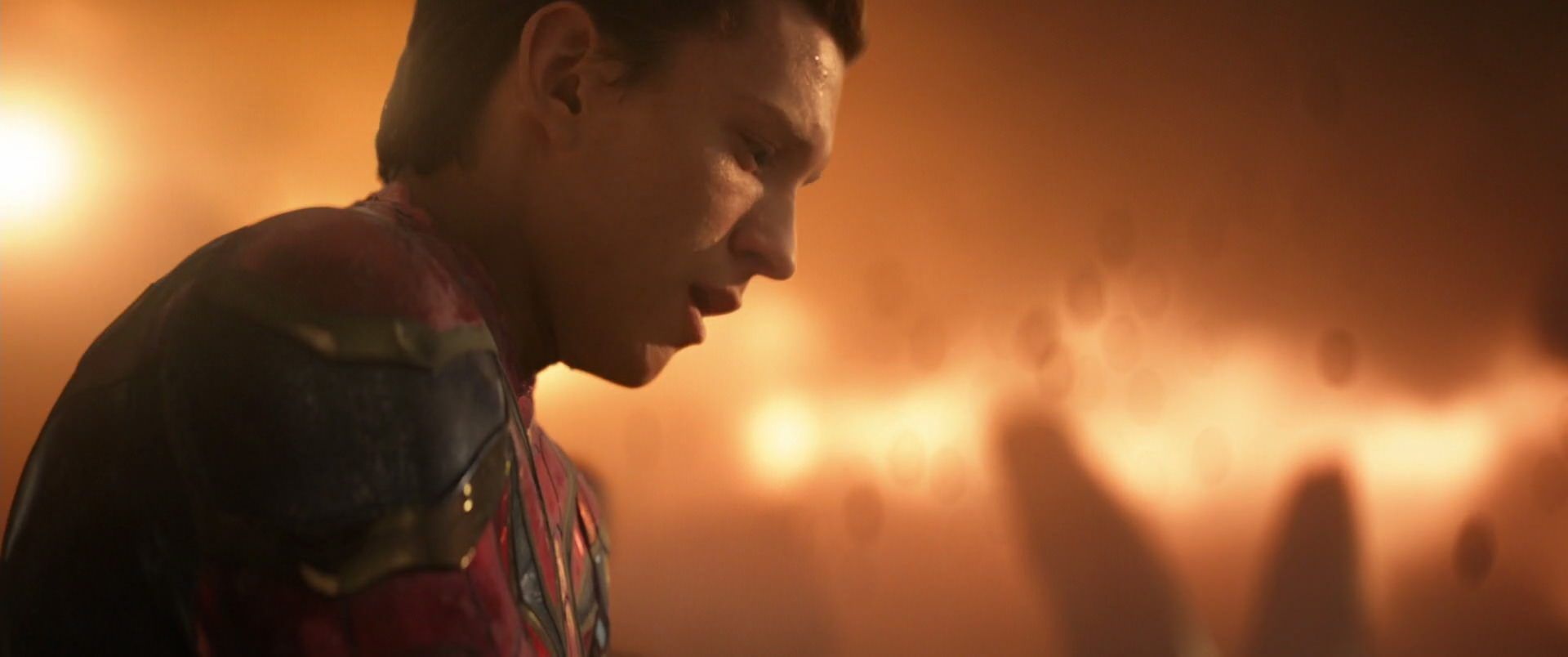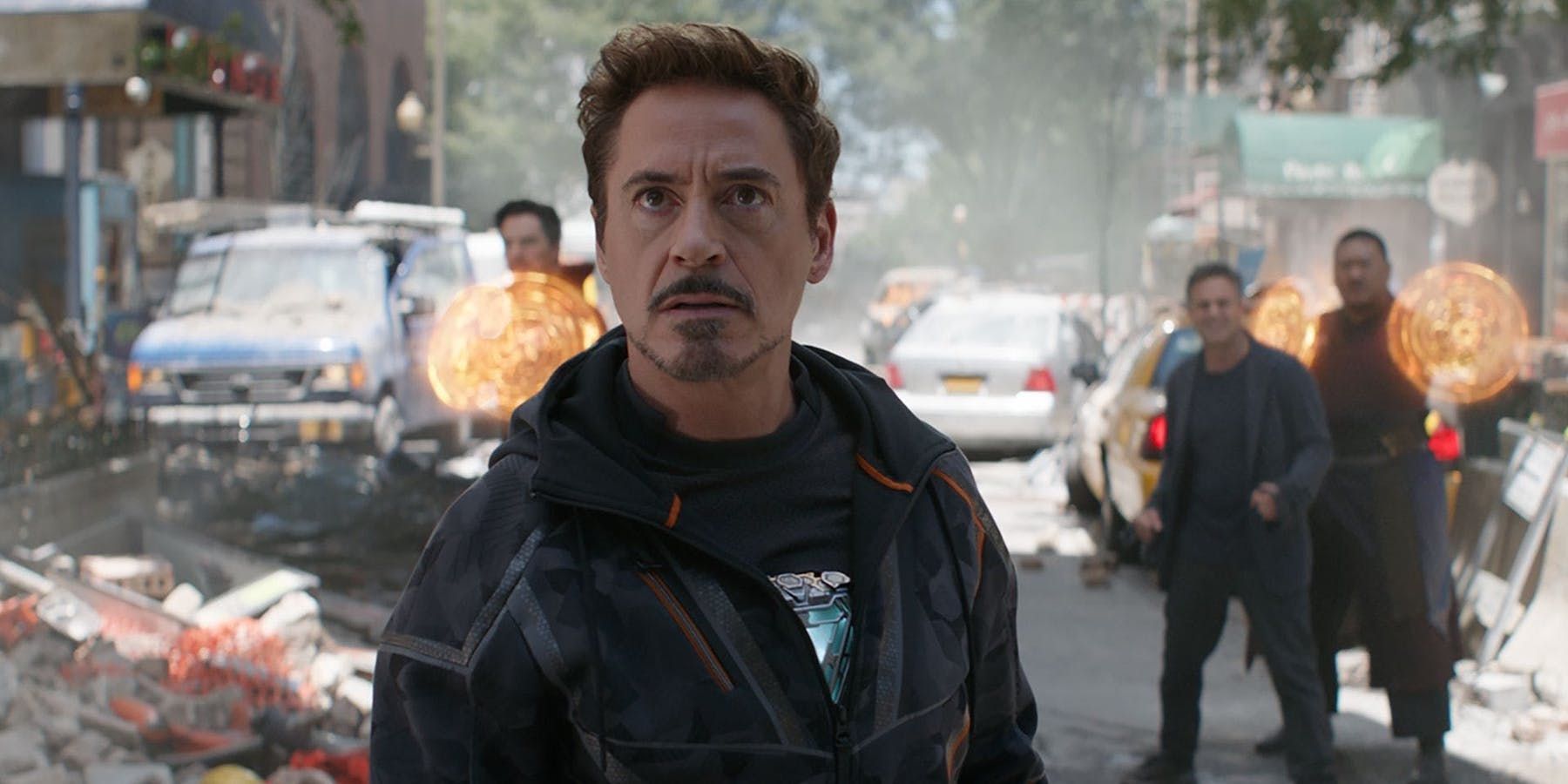“How the MCU Was Made” is a series of deep-dive articles that delve into the ins and outs of the development history, production, and release of all the Marvel Studios movies
In the grand scheme of the Marvel Cinematic Universe, the Avengers movies have always been its cornerstones. 2012’s The Avengers was the first movie to combine all the MCU heroes in one film, solidifying the idea of an interconnected universe. 2015’s Avengers: Age of Ultron marked a turning point of sorts, as our heroes started questioning one another and each individual’s faults rose to the surface in intriguing ways. So we knew Avengers 3 was inevitable and would be “important,” but no one could quite guess just how big the eventual movie would be. As the folks at Marvel Studios started mapping out what the future of the MCU looked like, they decided to use Avengers 3 as a way to finally pay off that Thanos cameo from the end of The Avengers... and then some.
A villain as big as Thanos couldn’t contain just one movie, and he wouldn’t just serve as any old antagonist. Thus, an idea was born: a two-part Avengers epic that not only brings Thanos firmly into the fold, but marks a conclusion for the MCU story that’s been told thus far. This is how Avengers: Infinity War, one of the biggest movies in history, was created.
To talk about the making of Avengers: Infinity War is to also talk about the making of Avengers: Endgame, but I’ll do my best to denote the differences (and there are many) throughout this piece. The inception point, however, is the same for both films. The idea was born on a Marvel Studios creative retreat, as recounted by Marvel Studios president Kevin Feige:
“We had a [creative] retreat. I initiated [them] in the summer of 2008—after Iron Man had come out and succeeded and we had announced Iron Man 2 and Thor, Captain America, and Avengers—where we just get away from everything, away from the phones, and away from the daily schedule to just focus creatively on the stories. We were on our third retreat perhaps, [around 2014] when we started talking about what would become Infinity War and Endgame, and in particular how do we pay off this purple guy that Joss [Whedon] set up at the end of Avengers 1 and start to intertwine him with these awesome Infinity Stones that we have that provide wonderful MacGuffins in these individual films, and when you put them together, we thought could be more. It was on that retreat, that was the first time we thought of doing two movies at the same time. Which has its pros and cons.”
In October 2014, fairly shortly after that retreat, Marvel Studios announced that Avengers: Infinity War – Part I would be released on May 4, 2018 followed by Avengers: Infinity War – Part II on May 3, 2019. At this time, Whedon was busy finishing up Avengers: Age of Ultron, which we would later learn was a pretty contentious production as he and Marvel butted heads on a number of issues. As the architect of the first two Avengers movies, he was the presumed frontrunner to spearhead the next two, but Whedon was spent after Age of Ultron and declined to return:
“Every movie I have ever made has been an ensemble piece of increasingly enormous proportions,” he says, sitting next to Feige in the editing suite. “That many balls in the air, it’s only going to get bigger with Infinity War. I’m not going to be able to give it what I would need to.” He rasps in a geezer voice: “It’s a young man’s game.”
Whedon later admitted that even though it was his idea to put Thanos in The Avengers, he was never quite sure where to take the character:
“Honestly, I kind of hung [Thanos] out to dry. I love Thanos. I love his apocalyptic vision, his love affair with death. I love his power. But, I don’t really understand it. He’s had a lot of power, and he was cool in the comics. And I’m like, Thanos is the ultimate Marvel villain! And then I was like, I don’t actually know what I would do with Thanos. So, I liked what [the Russo brothers] did so much, and I thought Josh Brolin killed it. And they did an amazing job of keeping that performance on-screen. But it wasn’t like I was like, here’s a set of directions. I was like, I’m gonna get through Ultron, nap for four years, and then I’ll come to the premiere. Which I did! It was like, this is so cool!”
So Whedon was out, but Marvel still needed someone capable of shepherding this massive undertaking. In April 2015, as filming was about to get underway on Captain America: Civil War, Marvel signed directors Joe and Anthony Russo to take the helm of Infinity War 1 and 2. That they were hired before even making Civil War speaks to the strength of not only their work on Captain America: The Winter Soldier, but also their working relationship with Marvel Studios throughout the development of that film and Civil War. Clearly the Russos and Marvel saw eye to eye on how to make these kinds of movies. The next month, the Russo Brothers’ Marvel screenwriters and MCU veterans Christopher Markus and Stephen McFeely were tasked with writing the two-part epic.
However, at this time Marvel realized that Infinity War would no longer be a “Part 1” and “Part 2” scenario, despite their previous announcement. Feige explained that shortly after revealing the release dates and titles in October 2014, Marvel realized they wanted to make two distinct movies, not two half-movies:
“We announced [in 2014] Infinity War Part 1 and Part 2. Very soon after that, as we started talking about it, we realized that’s not really what we were doing, and that’s not really what we wanted to do. We didn’t wanna do half a movie and then half a movie. We wanted to do two distinct movies, and we can talk about is it a cliffhanger or not at the end of Infinity War—and it’s semantics perhaps—but we always looked at it as not a cliffhanger. Thanos won and the movie is over. And now that you’ve seen Endgame it’s a tonally very different movie than Infinity War and stylistically very different than Infinity War, which again was always the intention, so very soon after calling them Part 1 and Part 2, we said, ‘Oh we’re not gonna do that.’”
As filming on Civil War got underway, Markus and McFeely got to work developing the screenplays and overall arc for both Avengers sequels, crafting a “blue sky ideas” document that was shared with the people at Marvel.
During this development phase, Markus, McFeely, and the Russo brothers briefly explored the comics storyline in which Thanos is obsessed with Death—who is a physical being—but ultimately found the addition of Lady Death as a character was too time-consuming in a story already packed with characters:
“It’s our responsibility to carry forward the story as it’s been set out,” said Anthony Russo. “You’re spending two-and-a-half hours with this many characters, so then adding in some character that the audience has no relationship to, having to explain the backstory of that character, making you care about that character, making Thanos care about that character, making that character interesting to the other characters … ” He trailed off, shaking his head.
Instead, they chose to adapt the thematic pull of that storyline into a different kind of motivation for the Mad Titan:
“We talked about his motivation, and much of the motivation connected to Lady Death is about balance,” said Feige. “It’s the balance between life and death, the belief that life was getting unchecked and out of hand and there needed to be a correction. We wanted to make that the driving force of Thanos and his backstory. That’s where Chris and Steve and Joe and Anthony found a more natural, grounded way … well, as grounded as a giant Mad Titan can be.”
Regardless, the idea behind Infinity War was to introduce Thanos as the film’s protagonist. It would be viewed from his perspective, as a way to compellingly introduce this Big Bad who’s been teased over all the previous films, but who audiences still haven’t formally met. McFeely explained:
“So Thanos will get the benefit of both [screen time and familial relationships]. He’s got daughters that he clearly has to deal with, and James [Gunn] did a nice job of setting the table for us, but we’re certainly going to run with that. And screen time. Very often, in the screenwriting weeds, we’re trying to get a character up and off the ground and so the bad guy tends to be a foil for the development of the hero, and that’s not the case here. If anything, it’s the opposite. Our heroes are foils for the villain, whose story we need to tell at large.”
In order to get further into the mindset of Thanos as the protagonist of Infinity War, Markus and McFeely attempted different tracks on multiple drafts of the screenplay. One featured Thanos as a narrator and delved into the backstories of his Black Order, clocking in at 250 pages. While this ultimately didn't end up being "the one," the experience helped them further flesh out the motivation of the film's protagonist.
Structure-wise, the filmmakers hit upon the idea of approaching Infinity War like a smash-and-grab heist movie, with Thanos hunting down Infinity Stones and the Avengers playing catch-up the entire time. The Russo Brothers even cited Out of Sight as an influence on the film's style and structure.
But then there were the heroes. Markus and McFeely officially started writing Infinity War in early 2015, and the film didn’t come out until 2018. In that time, Marvel released Age of Ultron, Ant-Man, Civil War, Doctor Strange, Guardians of the Galaxy Vol. 2, Spider-Man: Homecoming, Thor: Ragnarok, and Black Panther. That’s a whole lot of character development for the heroes of the MCU happening at the same time they're supposedly writing this "conclusion" to their stories, so Markus and McFeely were kind of dealing with a moving target. For example, once Chris Hemsworth and Taika Waititi started essentially rebooting the character of Thor while developing Thor: Ragnarok, they met with the Russo Brothers and Markus and McFeely to explain the character’s new direction, which in turn changed how Thor fit into Infinity War:
“We changed a few scenes early on because Hemsworth had just done Thor: Ragnarok and was concerned,” said McFeely. “He was like, ‘Listen, guys, I’ve been in Australia and we’re doing crazy stuff!’” Though Thor was originally meant to be the straight man for Marvel’s most comedic team of characters, Thor: Ragnarok director Taika Waititi had just showcased a jokier side of the muscular god that Hemsworth was keen to keep, so the writers flew Waititi out for two days to pick his brain, then revamped Thor and his Infinity War arc to accommodate that funnier sensibility.
This collaborative process extended to all the directors in the MCU, as Black Panther director Ryan Coogler and his team provided the Russo Brothers with a map of Wakanda for the third act battle in Infinity War, and James Gunn offered invaluable insight into the scenes featuring the Guardians of the Galaxy—going so far as to suggest two options for songs to use as the characters’ introduction:
“We wrote many drafts, and then [Gunn] read the scenes with the Guardians in them and made suggestions,” said Markus. “He came up with at least one hysterical riff that’s in there whole cloth, and their opening song came from him, too.”
Gunn even disagreed with a major plot point in the story. In the original script, when Gamora asks Star-Lord to kill her when Thanos has her captured, Star-Lord can’t bring himself to pull the trigger. Both Gunn and Chris Pratt argued that Star-Lord would pull the trigger, so Markus and McFeely changed the script:
“There was a choice we had Star-Lord make in the movie that Gunn was adamant he wouldn’t make, and Pratt agreed with him,” said McFeely. “And so we said, ‘If you guys feel that strongly about it, we’ll do it your way.’ It didn’t alter too much of what we were trying to do, but it was a good example of how that kind of caretaking was a bonus to us.”
The writers explored every possible combination of characters to come up with the most interesting storylines for Infinity War, but even then the massive ensemble meant that some things—like the potential romance between Natasha (Scarlett Johansson) and Bruce (Mark Ruffalo)—didn’t make it in:
“If it didn’t serve the Thanos plotline, we could only glancingly hit it,” said McFeely, though he says they tried. “We wrote scenes for a lot of things where we just felt, ‘Now is not the time,’” said Markus. “There were a lot of situations we wanted to follow up, but nobody in real life would be addressing those things with Thanos coming. There are far more pressing things than who may or may not have slept with who.”
Like who was going to survive Thanos’s snap, and who would get dusted. The finale of Infinity War finds the villain winning, the Avengers defeated, and half the population of the entire universe dusted into thin air—including a number of MCU heroes we’ve come to know and love. Feige explained that they considered a number of different scenarios over the years to decide who did and didn’t die at the end of Infinity War:
“We spent, it’s no exaggeration, years, in a room. Myself, our executive producer at Marvel Studios Trinh Tran, Joe and Anthony Russo, and our screenwriters Chris Markus and Steve McFeely, years working on Avengers: Infinity War and Endgame. And one of the fun games was we had character cards that were spread on a table, that were up on white boards, and deciding who was going to go at the end…and they moved around a little bit, but for the most part, what you saw at the end of the movie is what we had determined early on…”
That determination was based on a combination of whose deaths would be most impactful, and setting up a table that left the OG Avengers alive heading into Endgame:
“…in large part because it would be the most heartbreaking. Seeing T’Challa go right after his first appearance, seeing Spider-Man go in Peter Parker after that relationship had been established between he and Tony Stark. And it also was designed to leave behind the original Avengers because Endgame very much follows their story.”
As for the conception of the film’s ending, Feige says that idea was conjured early on in the development phase:
“We talked about that ending for years and years and years. It was the reason to adapt Infinity Gauntlet. What was the most shocking thing we could do? End the movie with The Snap.”
Another benefit of ending with the bad guy winning was that Marvel could counter critics who complained their movies were safe and predictable—although that didn’t mean Feige wasn’t sweating the week of release:
“I was a hundred percent confident in that ending, until about the Monday before release. Then I started to get really nervous. It was like, ‘Wait a minute: what have we done?’ For years, leading up to the release of that ending, people were going, ‘These movies are predictable. The good guy always wins.’ And for years I was thinking, ‘Just wait.’”
To that end, they even shot extra footage that was never meant to make it into the movie (like the entirety of the Avengers running towards the camera in Wakanda) in order to mislead audiences in the marketing. After all, the impact of that ending is best felt when you either have no idea where it’s going, or have the wrong idea of where it’s going. In order to keep the secrets under wraps while filming, Markus and McFeely actually wrote fake scripts, and Robert Downey Jr. and Chris Evans were the only two actors who read the entire script. Other actors merely got their individual scenes and nothing else.
To drill down the finality of the film's ending, the Russo Brothers considered not including a post-credits scene at all, before ultimately deciding to shoot the short scene the serves as a lead-in to both Endgame and Captain Marvel:
"Part of it was because we knew the ending was a complicated ending, a difficult ending," said Anthony Russo. "And we wanted that ending to be very definitive. We didn’t want to complicate it with other ideas. So there is one tag that puts a small button it, but that’s it.”
Principal photography on Avengers: Infinity War officially began on January 23, 2017, and it was marked with a set video featuring Downey, Pratt, and Tom Holland. Indeed, the very first scene to be shot for Infinity War was part of the battle on Titan from the end of the movie.
While the initial idea behind Infinity War and Endgame was to shoot both movies at the same time, it was revealed shortly before production began that the plan had changed, and instead they’d be shot back-to-back. The reason given at the time was that it was too “complicated,” but as it turns out, the actual reason was that the Avengers: Endgame script wasn’t done yet and Markus and McFeely needed more time to work on the script. Feige explained:
“Initially, we thought there’d be great savings—which on a movie of this size is relative—shooting them at the same time, and we’d be able to do what’s called crossboarding where we shoot all the scenes in Avengers Compound all at the same time, all the Infinity War scenes all the Endgame scenes, and then strike that set and move on. A few months before we started filming we knew we weren’t gonna be able to do that because we were still writing Endgame. Chris and Steve, our amazing screenwriters, were still writing Endgame and still finishing Infinity War, and we knew we had to shoot them one right after another. So any sort of clever savings went out the window at that point.”
The back-to-back production took place mostly at Pinewood Atlanta Studios in Fayette County, Georgia, although there were a couple of significant breaks for the cast and crew, and one big break in between shooting Infinity War and Endgame:
“There were a couple of big breaks because it’s difficult to ask people to shoot for 200 days straight, but it’s the scheduling of the actors that ended up being the best part of that, because we have a lot of actors in this movie and a lot of busy actors, a lot of famous actors, a lot of actors that star in their own movies whenever they want to. So we needed to declare this time for these two movies so that their availability [could be flagged].”
The production also made use of brand new cameras, with the Russo Brothers and cinematographer Trent Opaloch wielding the brand new Arri Alexa IMAX digital cameras for the entirety of the shoot. These cameras were previously used for the airport sequence in Civil War, but Infinity War and Endgame became two of the first movies ever shot entirely with these new cameras.
Filming on Infinity War wrapped on July 14, 2017, with the team then taking a month-long break before rolling cameras on Endgame—although a few Infinity War scenes were shot after this break as well.
After a very intense post-production period, which involved rendering the character of Thanos from scratch along with over 3,000 total visual effects shots, Avengers: Infinity War hit theaters on April 27, 2018. The film earned positive reviews, but it was its box office performance that really impressed—especially just a couple months after Marvel’s Black Panther exploded at the box office. Infinity War broke the opening weekend record with $257.6 million and went on to gross a total of $678.8 million domestic and $2.048 billion worldwide. It was the highest-grossing film of 2018 and still stands as the fourth-highest grossing film of all time.
In the age of superhero movies ruling the box office and cultural conversation, Avengers: Infinity War stands as a genuine epic. Combining all these disparate characters into the same movie while simultaneously introducing a major villain in a compelling way is no easy task, but the filmmakers wisely chose to present Infinity War from Thanos’ point of view. We still get the cheer-worthy moments from our heroes, sure, but knowing what story Endgame would tell, the structure of Infinity War serves its purpose remarkably well. And while calling the movie a complete standalone may be a bit of a stretch, Infinity War and Endgame are certainly distinct from a structural, tonal, and aesthetic standpoint.
That whopper of an ending would leave audiences hanging for a full year, and just as Ant-Man served as the dessert after the meal of The Avengers in 2012, the Paul Rudd-fronted film’s sequel would fill the unenviable role of following in Infinity War’s footsteps while offering pretty much zero clarity or hints towards where things were going in Endgame. Next week, we dig into the making of Ant-Man and the Wasp.
If you missed my previous How the MCU Was Made articles, click the links below:
- Iron Man
- The Incredible Hulk
- Iron Man 2
- Thor
- Captain America: The First Avenger
- Marvel’s The Avengers
- Iron Man 3
- Thor: The Dark World
- Captain America; The Winter Soldier
- Guardians of the Galaxy
- Avengers: Age of Ultron
- Ant-Man
- Captain America: Civil War
- Doctor Strange
- Guardians of the Galaxy Vol. 2
- Spider-Man: Homecoming
- Thor: Ragnarok
- Black Panther

